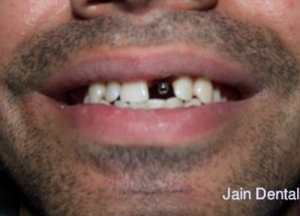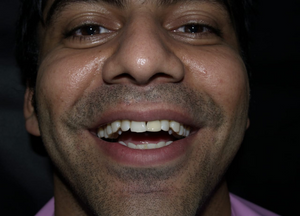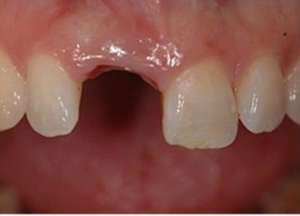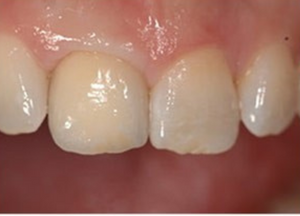
Dental cavities are formed by the action of bacteria in the mouth. The bacteria produce acid which forms plaque and damages first the enamel and then the dentin. It causes tiny holes in the teeth called dental cavities or Caries or tooth decay. Bacteria is able to damage due to bad oral hygiene or receding gum line, where bacteria use sugar or starchy food to produce the acid. It is diagnosed in normal physical checkup and confirmed with a x-ray.
In initial stages, simple fluoride treatment can arrest the spread of infection. Otherwise, cavity is filled with metallic dental amalgam or composite resin. The resin is hardened with plasma laser light to ensure proper curing in all nooks and corners of the cavity. If the damage is very extensive than either root canal treatment is done or tooth may have to be extracted. Our team has extensive experience in filling the cavities.
” You are in safe and most capable hands “
– Patient Speak
Visited some top clinics in Delhi, but it became worse and more complex. Dr Nitin was able to rectify the outcome of earlier botched up treatments.
- Patient
Thanks for a great experience. Everything was very efficient and painless. There was a commitment to healthy & holistic treatment – a very good value for money.
- Patient
Before

After

Before

After

Cavity Filling - More Info
Dental Cavities, also known as Caries or Tooth Decay, are small holes in the tooth. These are caused by the acid (produced by bacteria in the mouth) which dissolves the outer enamel first and subsequently starts damaging the inner part of tooth if not arrested in time. Plaque forms on the outer surface of tooth due to improper oral hygiene and plaque starts eroding the enamel. It can form on the smooth surface of tooth or top chewing surface where it forms a pit or on the receding gum line resulting in root decay. Persons of any age can get cavities, from infants to very senior citizens.
Causes
Four conditions need to be met to form cavities. A surface, caries causing bacteria, sugar and starchy food and time. If sugary and starchy food in not cleared off from tooth surface, bacteria starts feeding on it and forms a film of plaque on the surface. With time, the plaque hardens to form tartar which acts as a shield for the plaque. The bacteria produce acid to attack enamel and that forms the first stage. Over a period of time, it makes a hole and start going inward to attack dentin and subsequently tissues also. If not treated in time, it can decay the tooth completely.
Symptoms
In early stages, there may not be any symptoms. In the beginning, a white spot like chalky area may appear on the surface showing start of demineralization of the surface. Over a period of time symptoms may develop including bad breath, bad taste in the mouth, bleeding gums, swelling of the face, toothache or pain while eating, sensitivity, redness in the mouth, brown, black or white staining on tooth surface, holes or visible cavities in your teeth or broken teeth.
Diagnosis
During dental checkup, your doctor will inspect all visible areas of the teeth to examine onset of cavities formation. It may be followed by Xray of designated tooth to confirm the diagnosis or to look at the extent of damage plus inter teeth cavities which may not be in the visible area. Lasers also may be used to detect cavities.
Treatments
The treatment for cavities depends upon the extent of damage, as given below
Fluoride Treatment
In early stages where a lesion is formed but cavity is not formed yet, it can be treated with Fluorides, a process which is called remineralization. It may be done thru home remedies like Fluoride toothpaste or treatment applied in the clinic.
Filling
A hole is drilled with help of a dental drill or made with the help of a laser gun. Decayed material is taken out and space is filled with a material. Filling material could be dental amalgam made of metals like silver, mercury, copper or gold or it could be a composite resin. Resins needs to be cured and lasers may be used to ensure proper curing of the resin.
Root Canal
If the cavity has infected the inner tooth canal, root canal treatment may have to carried out followed by fixing a crown.
Extraction
With no other remedy possible due to extensive damage, tooth may have to extracted and if required, restoration procedure like dental implant, bridge or denture may be performed.
